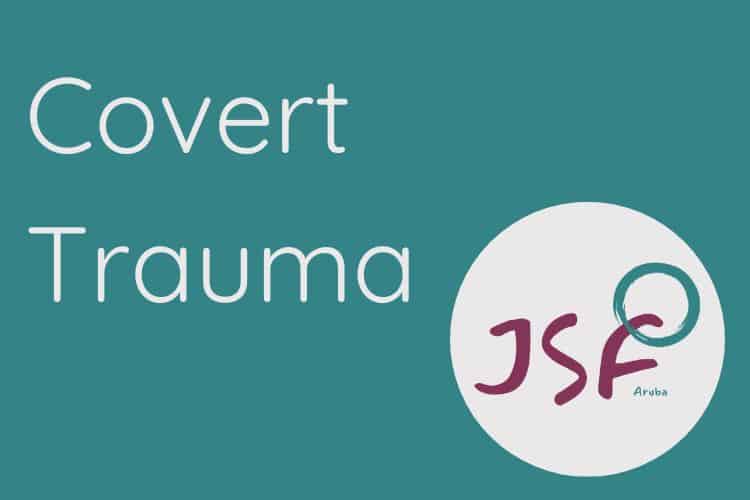
Covert trauma is often inter-personal in nature. Unlike acute trauma and chronic trauma, the trauma often has links to those who should be safe to you, like family members, your work environment, your social circle or your life-partner.
Examples of covert trauma are
- Alienation and Ostricism
- Bullying
- Exposure to Household Tension and Domestic Violence
- Discrimination
- Double binds
- Emotional Neglect
- Gaslighting
- Keeping Secrets
- Parentification
- Residential Mobility
- Scapegoating
- Trivialization
- Unwanted sexual exposure
- Verbal abuse and threats
Myth – covert trauma only happens during childhood
This is the biggest misconception about covert trauma. No, these interpersonal traumas do not only happen during childhood. And again, as published earlier, a lot of these instances can be seen as plain annoying or stressful in isolated events. They can be traumatic for a variety of reasons. Either the person responsible for creating the traumatic experience is someone who we should feel safe from, the traumatic experience is an ‘accepted’ part of the culture, it repeats itself often, or continuously.
Myth – covert trauma only affect sensitive people
Before you try and wave away the effects as only affecting ‘sensitive’ people, a lot of covert traumas are at the root of offender behavior too. Trying to minimize the prevalence, severity or effects of covert trauma on society as a whole comes with it’s own risks.
Effects of covert trauma
Although studies into the effects of covert trauma are still somewhat rare, or too small to base conclusions on, the numbers and conclusions there are, are rather disconcerting.
A study into residential mobility in China found that “residential mobility during childhood was strongly associated with common mental disorders in early adulthood and that these associations were further increased by younger age at first move and being a left-behind child. Disadvantage and maltreatment during childhood were also strongly associated with psychopathology and were more common among those who experienced residential mobility.”
And a lot of covert traumas have been linked to mental health issues ranging from depression, eating disorders to self-harm and suicide.
This article will be updated with further research and sources soon.
Sources
DEVELOPING THE COVERT TRAUMATIC EXPERIENCE SCALE (COTES): A RETROSPECTIVE EARLY PSYCHOSOCIAL TRAUMA ASSESSMENT TOOL
Tiffany E. Vastardis PhD, LMHC, CCTP, CMHIMP
Clinical Education Specialist • Florida Residential Clinical Training Liaison • Mental Health Researcher • Licensed Psychotherapist • Clinical Trauma Specialist • Integrative Medicine Practitioner
Little “t” Traumas
Little “t” traumas are highly-distressing events that affect individuals on a
personal level, but do not fall into the Big “T” category (Staggs, 2014). Big “T” traumas
are those overt forms of trauma that are included in the DSM-5 as precipitating criteria for a PTSD diagnosis (APA, 2013). On the other hand, little “t” traumas include (but are
not limited to): non-life-threatening injuries, emotional abuse, bullying or harassment,
dissolution of significant relationships, and the death of a pet. A small body of clinical
research indicates that little “t” traumas can cause significant emotional damage. For
example, repeated exposures to such traumas during important periods of brain
development, such as early childhood and adolescence, can be especially impactful to an
individual’s mental health and coping abilities (Staggs, 2014). Recent evidence from,
primarily, single case, non-empirical studies suggest that compounded exposure to little
“t” traumas can cause more emotional harm than exposure to a single Big “T” event, such
as a natural disaster (Staggs, 2014; van der Kolk et al., 2009).
Though rather scarce, recent evidence generated from, primarily, non-empirical
investigations have begun to lend credence to the importance of accounting for such
experiences when working with clients. Sometimes labelled little “t” or Small “t” trauma,
psychosocial trauma has gained attention in clinical practice, as theorists purport that
such experiences can cause substantial impairment to affected individuals, often
perpetuating and, even exacerbating, symptomology born from more overtly traumatic
experiences. Though limited, findings from these studies, as well as current trends in
proposed diagnostic themes, inform the need for further investigation into the influence
of the experience of little “t” traumas.
Defining Covert Trauma
The proposed term, covert trauma, encompasses those forms of trauma that are
psychosocially related, including: neglect, parentification, verbal abuse and threats of
harm, minimalization, scapegoating, gaslighting, discrimination, and other forms of
psychoemotional abuse. Also included within this proposed framework are events that
can negatively affect healthy childhood development, such as frequent relocation and
unwanted early sexual exposure (Altobelli, 2017).

